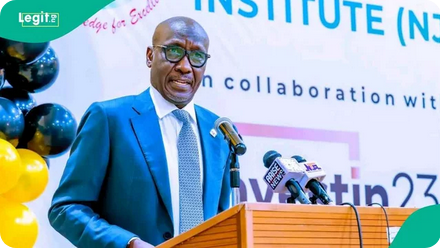
The Nigerian National Petroleum Company Limited may continue servicing debt related to its crude-for-loan deal until 2029 as the demand for oil by local refineries rises....CLICK HERE TO READ THE FULL ARTICLE➤
The state oil firm’s debt burden came from several crude-for-oil loan arrangements tied to Nigeria’s oil output and various financial obligations.
The development came amid increasing demand for oil following the commencement of production by several domestic refineries in recent months.
The refineries include the Port Harcourt, Warri and the $20 billion Dangote refineries.
The Nigerian Upstream Petroleum Regulatory Commission (NUPRC) disclosed the three functional refineries would require about 123,480,500 barrels of crude oil every six months.
It means that the demand for crude by local refineries has continued to surge amid crude-for-loan arrangements by NNPC.
Checks show that the NNPC has mortgaged 272,500 barrels daily of crude oil via several crude-for-loan deals amounting to $8.86 billion.
The pledge means that about 8.17 million barrels of crude will be used for different loan deals by NNPC.
The information is based on an analysis of the Nigeria
Extractive Transparency Initiative (NEITI) and the NNPC financial statements.
According to a Punch report, NNPC deals include Project Panther, Project Bison, Project Eagle Export Funding, Project Yield, and Project Gazelle.
Reports say the NNPC has already repaid about $2.61 billion in loans, representing 29.4% of the total credit facility. As of June last year, $6.25 billion, or 70.6%, remained outstanding.
Project Panther reportedly involves a $1.4 billion deal secured in 2022 from a consortium of commercial banks and Chevron Nigeria Limited.
The loan’s maturity date is due in 2029 and carries a seven-year tenor, with NNPC drawing $359 million.
Reports disclose that NNPC has made no repayment as the deal has a moratorium period before the principal payments commence.
Under financing terms, the NNPC is expected to supply 23,500 barrels daily as collateral, including a three-month SOFR rate, a 5.5% margin, and a one-percent liquidity premium.
In 2021, the state oil firm secured a $1.04 billion pre-export financing facility to acquire a 20% equity in the Dangote Refinery.
The deal, which has been fully repaid, required the national oil company to pledge 35,000 barrels daily.
Project Eagle comprises multiple tranches of export funding. The original $935 million tranche was obtained in 2020 with a five-year maturity tenor. It requires 30,000 barrels of crude oil daily and has been repaid since September 15, 2023.
Other tranches extended the financial challenges, including a $635 million tranche repaid in 2023. This allowed for a larger $900 million loan obtained in 2023, with a maturity date due in 2028.
Project Gazelle has a loan portfolio of $3 billion secured in December 2023, which required the NNPC to pledge about 90,000 barrels of crude oil per day.
According to sources, about $2.25 billion has been drawn from this facility, with repayments commencing mid-2024.
The arrangement shows NNPC’s dependence on crude oil production to meet financial and fiscal needs.
Project Yield is a support project for Port Harcourt Refinery, involving a $950 million loan obtained in 2022 and matures in 2029.
Project Yield pledges about 67,000 barrels per day of Nigeria’s crude oil, and repayments began in December 2024.
Experts believe that the various commitments by the NNPC will affect crude supply to the nation’s functional refineries.
The NNPC supplies the Lekki-based refinery with 300,000 barrels of crude oil under the naira-for-crude deal.
Following the commencement of the Port Harcourt and Warri refineries, NNPC faces the dilemma of continuing to supply the mega refinery with the agreed 300,000 barrels of crude.
Legit. earlier reported that Wale Edun, the minister of finance, revealed plans to repay the $6 billion debt owed by NNPC to marketers.
The minister disclosed that due to the debt, NNPC faces rising pressure from suppliers and stakeholders.
He said that despite subsidy removal, the debt was caused by FX scarcity and carried elsewhere by the NNPC. ...CLICK HERE TO READ THE FULL ARTICLE➤
Be the first to comment